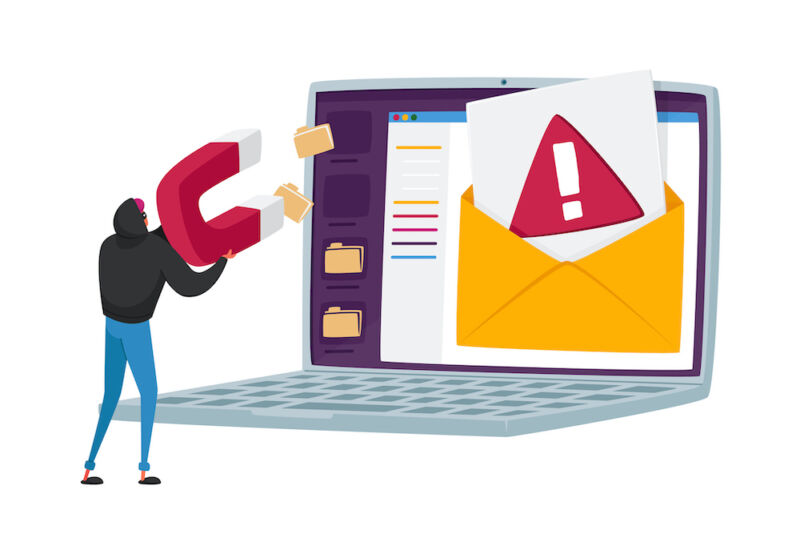POISONING THE WELL —
Vulnerability in third-occasion libraries can ship gadgets’ prospects to malicious websites.
Dan Goodin –

Getty Photographs
{Hardware} and machine makers are scrambling to fetch out if their wares endure from a primary vulnerability truthful not too way back model in third-occasion code libraries archaic by a total bunch of distributors, together with Netgear, Linksys, Axis, and the Gentoo embedded Linux distribution.
The flaw makes it conceivable for hackers with accumulate entry to to the connection between an affected software and the Internet to poison DNS requests archaic to translate domains to IP addresses, researchers from safety agency Nozomi Networks mentioned Monday. By feeding a prone software fallacious IP addresses many instances, the hackers can stress discontinuance prospects to set to malicious servers that pose as Google or another trusted self-discipline.
The vulnerability, which was disclosed to distributors in January and went public on Monday, resides in uClibc and uClibc fork uClibc-ng, each of which current conceivable choices to the commonplace C library for embedded Linux. Nozomi mentioned 200 distributors incorporate not not as much as with out a doubt one of many very important libraries into wares that, in keeping with the uClibc-ng maintainer, include the next:
- Linksys WRT54G – Wi-fi-G Broadband Router
- NetGear WG602 wi-fi router
- Most Axis community cameras
- Embedded Gentoo
- Buildroot, a configurable scheme for constructing busybox/uClibc-based absolutely principally applications
- LEAF Bering-uClibc, the successor of the Linux Router Venture that helps gateways, routers, and firewalls
- Tuxscreen Linux Cell phone
The vulnerability and the shortcoming of a patch underscore a subject with third-occasion code libraries that has gotten worse over the previous decade. Lots of them—even these relish the OpenSSL cryptography library which might be broadly archaic to supply compulsory safety capabilities—face funding crunches that fabricate the invention and patching of safety vulnerabilities exhausting.
“Sadly I wasn’t able to repair the scheme again on my have and hope somebody from the reasonably minute group will step up,” the maintainer of uClibc-ng wrote in an begin dialogue board discussing the vulnerability. uClibc, inside the meantime, hasn’t been up to date since 2010, in keeping with the downloads web page for the library.
What’s DNS poisoning, anyway?
DNS poisoning and its DNS cache-poisoning relative allow hackers to switch the true DNS seek for for a self-discipline harking back to google.com or arstechnica.com—typically 209.148.113.38 and 18.117.54.175, respectively—with malicious IP addresses that may masquerade as these websites as they’re trying and set up malware, phish passwords, or attain different immoral actions.
First model in 2008 by researcher Dan Kaminsky, DNS poisoning requires a hacker to first masquerade as an authoritative DNS server after which use it to flood a DNS resolver inner an ISP or software with fallacious seek for outcomes for a trusted area. When the fallacious IP deal with arrives ahead of the true one, discontinuance prospects mechanically connect with the imposter self-discipline. The hack labored given that bizarre transaction assigned to each seek for was predictable ample that attackers may properly include it in fallacious responses.
Internet architects mounted the topic by altering the supply port quantity archaic each time an discontinuance explicit particular person appears up the IP variety of a internet web page. Whereas ahead of, lookups and responses traveled handiest over port 53, the unique machine randomized the port quantity that seek for requests use. For a DNS resolver to accept a returned IP deal with, the response should include that linked port quantity. Blended with a very completely different transaction quantity, the entropy was measured inside the billions, making it mathematically infeasible for attackers to land on the lawful combination.
The vulnerability in uClibc and uClibc-ng stems from the predictability of the transaction quantity the libraries set to a seek for and their static use of present port 53. As Nozomi researchers Giannis Tsaraias and Andrea Palanca wrote:
On condition that the transaction ID is now predictable, to make use of the vulnerability an attacker would wish to craft a DNS response that accommodates the lawful present port, as neatly as use the plod towards the true DNS response incoming from the DNS server. Exploitability of the scheme again depends precisely on these components. Because the attribute does not apply any comment present port randomization, it’s miles doubtless that the scheme again can with out considerations be exploited in a good scheme if the working machine is configured to make use of a mounted or predictable present port.
Nozomi mentioned it wasn’t itemizing the comment distributors, software gadgets, or machine variations which might be affected to forestall hackers from exploiting the vulnerability inside the wild. “We are able to, alternatively, expose that they had been an expansion of smartly-identified IoT gadgets working principally essentially the most trendy firmware variations with a extreme chance of them being deployed proper by all critical infrastructure,” the researchers wrote.
On Monday, Netgear issued an advisory asserting the agency is attentive to the library vulnerabilities and is assessing whether or not any of its merchandise are affected.
“All Netgear merchandise use present port randomization and we’re not in the meanwhile attentive to any explicit exploit that may be archaic towards the affected merchandise,” the software maker mentioned. Representatives from Linksys and Axis didn’t at once reply to emails asking if their gadgets are prone.
With out further minute print, it’s laborious to supply safety steering for heading off this chance. Of us using a doubtlessly affected software should video present vendor advisories for updates over the following week or two.

